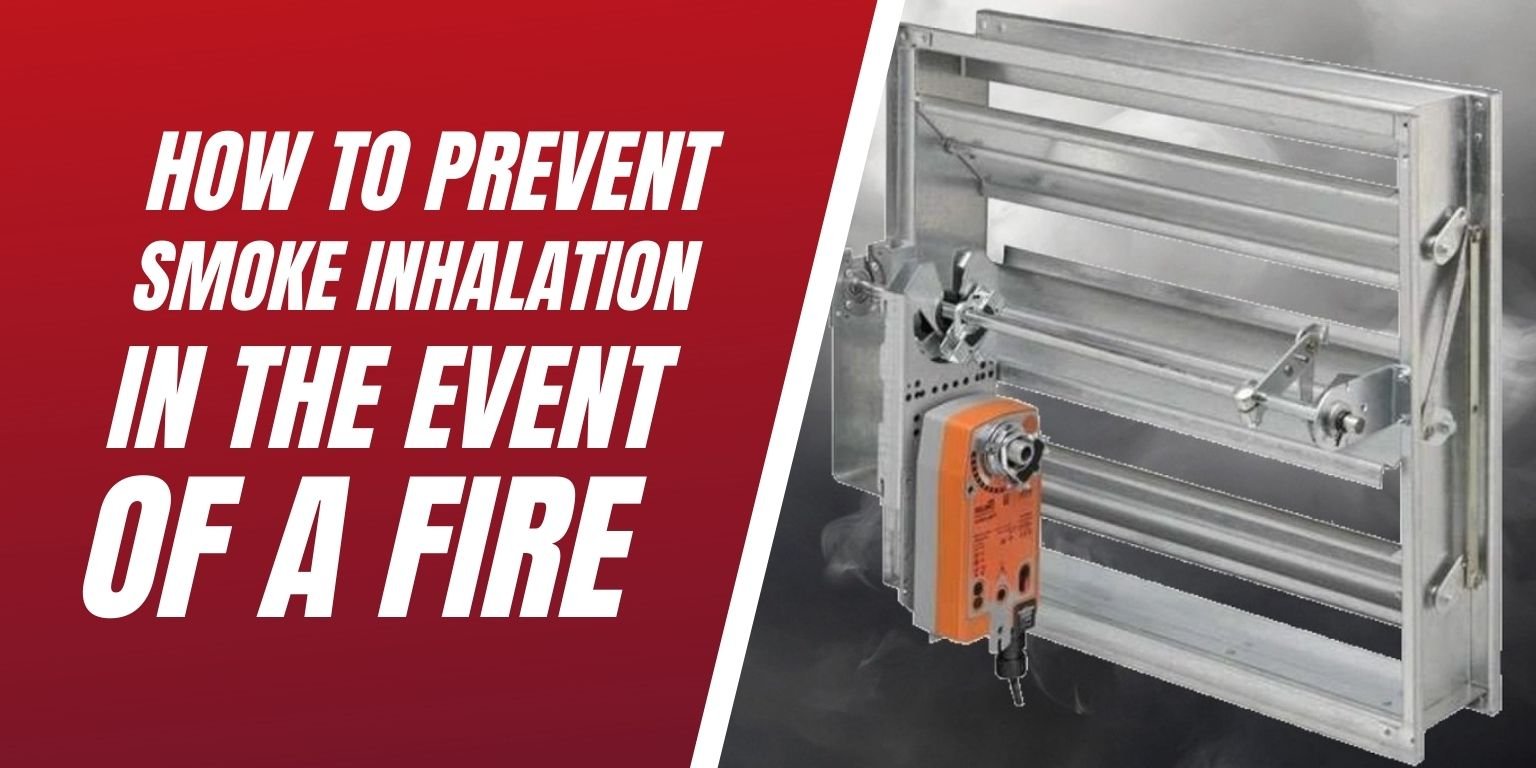
Did you know, smoke inhalation is the leading cause of death in the event of a fire. Evacuating from a burning building while staying calm is difficult and with smoke masking your face makes evacuation seem almost impossible. In fact, smoke can travel 120 – 420 feet per minute under fire conditions, which can cause hallways & stairwells to become dark with hazardous fumes swarming.
There are a variety of Passive Fire Protection plan components that can assist in preventing smoke from traveling swiftly throughout a building in the event of a fire such as smoke dampers and smoke barriers. Smoke Dampers and Smoke barriers help limit the amount of damage done to a building and provide occupants more time for evacuation without being overcome with the toxic fumes.
The Importance of Smoke Dampers
Smoke dampers are used to restrict the movement of smoke where ducts and air transfer openings penetrate assemblies that are designed to restrict the movement of smoke. They are typically operated by a smoke detector, which would also be located in the duct. Once smoke has been detected, the smoke detector sends a signal to the damper actuator, which uses the jackshaft and linkage to open and close the blades of the smoke damper.
The Combination fire-smoke dampers are used to restrict the spread of fire and movement of smoke where ducts and air transfer opening penetrate assemblies that are designed to restrict the passage of both fire and smoke.
The Importance of Smoke Barriers
Smoke barriers are a continuous membrane designed to help prevent the spread of smoke in the event of a fire emergency. Gaps and holes from penetrating items allow smoke to spread quickly throughout the building. Therefore, properly installed firestopping will help maintain the integrity of a wall by sealing off any holes and gaps to minimize the spread of smoke. Smoke barriers will have a minimum of a 1-hour fire-resistance rating.
Compartmentalizing a building into sections will help guarantee the building is prepared in the event of a fire. Therefore, it is important to stay current with all inspections, maintenance and repairs. As it could be a costly mistake to overlook, not only to your wallet but more importantly to the lives of the building’s occupants.
Smoke Damper Code Per NFPA
Smoke dampers are an important component in a Passive Fire Protection plan, hence the importance to stay in compliance with inspection requirements. LSS technicians will ensure your facility is compliant with all local and state building codes such as the National Fire Protection Association (NFPA) and the International Building and Fire Codes.
Smoke Damper - NFPA 105 – Section 6.5
Each damper shall be tested and inspected one year after installation. The test and inspection frequency shall then be every 4 years, except in hospitals, where the frequency shall be 6 years.
Getting caught in a fire is something no one wants to experience but unfortunately, it does happen. Prioritize your buildings’ fire & life safety plans and be prepared for the unknown. Give yourself peace of mind that all safety protection systems are in place and functioning properly to provide building occupants as much time as possible to escape the deadly fumes as quickly as possible.
Keep in mind that passive fire protection uses systems that help control and prevent the spread of fire and smoke. It does not, however, take any type of action to put out the fire. LSS Life Safety Services has you covered. Contact your team of professionals today to schedule a service.
Contact Us Here or call 888-675-4519

